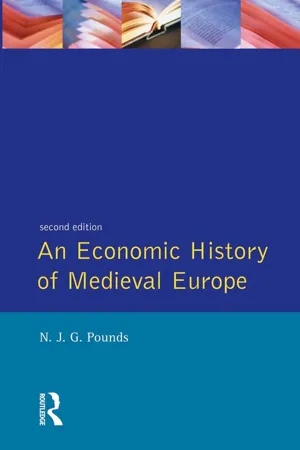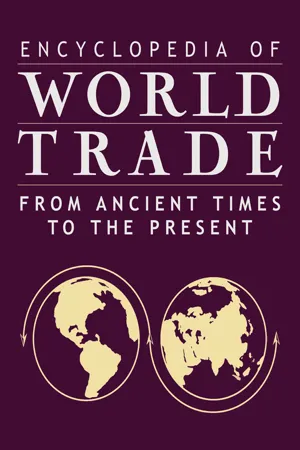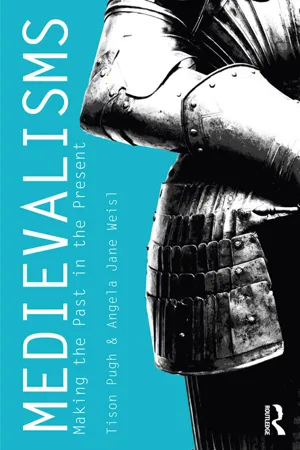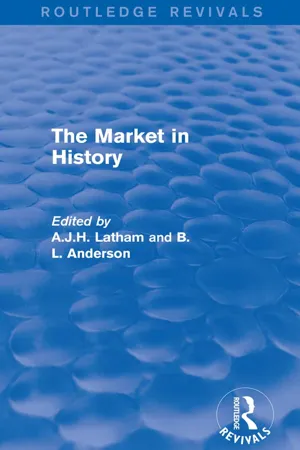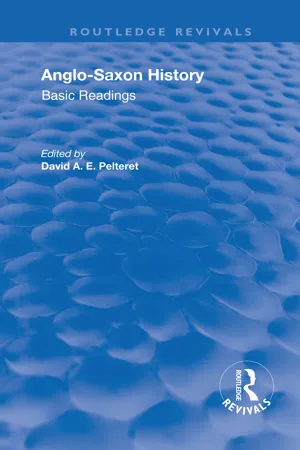History
Medieval Fair
A medieval fair was a large outdoor event that took place in medieval Europe, typically in a town or village. It featured a variety of entertainment, such as juggling, music, and dancing, as well as the buying and selling of goods. These fairs were important social and economic gatherings, providing opportunities for trade, socializing, and amusement.
Written by Perlego with AI-assistance
Related key terms
Related key terms
1 of 4
Related key terms
1 of 3
6 Key excerpts on "Medieval Fair"
- eBook - ePub
- Norman John Greville Pounds(Author)
- 2014(Publication Date)
- Routledge(Publisher)
During the Carolingian period and the centuries immediately following commerce was reduced to a trickle of commodities. It was not sufficient to justify permanent trading centres, open to merchants to do business at all times. How one merchant could arrange to meet with others was a problem solved only by the establishment of fairs. A fair was a periodic and regular meeting of traders, commonly for a period of days or even weeks and usually held not more than twice in a year. Here one merchant could count on meeting others, be sure of finding the commodities he needed, and usually of selling those which he carried with him. Fairs played an important role in giving pattern and regularity to his wanderings. On the other hand goods, such as cloth, metal ware and foodstuffs, were produced for the market in only small quantities. The regional fair served to gather them together under conditions that would encourage their sale and distribution.Fairs are commonly associated with markets. Indeed, the medieval charters which established them commonly linked them together as a grant of a weekly market and a twice or thrice yearly fair. There were, however, important differences between them. The fair assembled only infrequently; it may have been frequented by local people, but its essential business was in commodities of distant origin and between merchants from remote places. Inevitably the goods were relatively valuable; otherwise they could not have supported the costs of transport. By contrast the market served the needs of its local area. It was held frequently – usually once a week – as befitted an outlet for cheap and perishable goods. The area which a market could serve was thus defined by Bracton: a man could travel 20 miles in a day. He would normally spend a third of the day at the market, which would leave two-thirds for travel time. Therefore his journey could not be more than 6⅔ m. This rule of thumb was commonly used in England to determine whether a newly established market would be to the detriment of those already in existence. In this way a theoretical maximum density was established. In reality this was rarely achieved.Though different in function, markets and fairs were in some measure integrated into a system. The merchants who sold their goods at the fairs had in some instances acquired them by visiting in turn a series of weekly markets. Conversely, the villagers were likely to acquire what few exotic goods they were ever likely to possess at their local market, perhaps after selling their corn or an animal successfully. These items would be likely to have been brought to the local market by traders who had acquired them at the regional fair. Fairs became in the later Middle Ages particularly important as outlets for the products of domestic industries in rural areas. These goods, such as the South German fustians and barchents, more often than not reached the fairs by way of the markets. - eBook - ePub
Encyclopedia of World Trade: From Ancient Times to the Present
From Ancient Times to the Present
- Cynthia Clark Northrup, Jerry H. Bentley, Alfred E. Eckes, Jr, Patrick Manning, Kenneth Pomeranz, Steven Topik(Authors)
- 2015(Publication Date)
- Routledge(Publisher)
Many of the villages near major rivers hosted fairs. For example, the various towns of Champagne, lying where the Saône, Rhone, and Seine Rivers meet, held various fairs year round. Before people were able to travel easily, fairs furnished the primary opportunity for the exchange of goods and served as a community social activity. They also brought people together from different villages, and thus were places where one might find a marriage partner. Fairs are ancient and universal mechanisms for regional and even international interaction. Fairs were held generally at the same location and time of year and would last between a few days and a few weeks. During the sixteenth century, fairs occurred on an annual or semiannual basis. These fairs were commonly a gathering of local producers, both agricultural and artisan, petty merchants, and local consumers. In pursuing economic goals, the merchants also reflected their own backgrounds and interests throughout such gatherings. In the seventeenth century, pleasure fairs emerged. These fairs were dominated by entertainments such as plays and became popular.One of the first known successful fairs began in Britain around 1125. It was known as the Boston Fair and was the most popular in Europe. Commercial life revolved around this fair, which was a privilege granted to the town by the Crown. There were exhibitions by monks, natives, and foreigners. The main commodities from England at this time included wool, iron, and lead, which were exchanged for furs and falcons from Norway, wine from France and Italy, cloth from theLow Countries, and spices and other exotic items from the eastern Mediterranean. The king’s servants were allowed to purchase goods at this fair.Festivals have brought together peoples for trade and entertainment since ancient times. In more recent times, such festivals—like this 1941 Vermont carnival—have lost much of their trading dimension. (Library of Congress)Many new trade routes were developed because of such fairs. Producers, traders, and consumers traveled from long distances to take part in these exhibitions. The major trade routes that developed throughout this time directly affected the growth of individual trade fairs; among the most prominent were Geneva, Madrid, Antwerp, Burgundy, and Bartholomew Fair in England. Of the variety of goods traded at such fairs, cloth was probably the most important. An alliance was also created between 1250 and 1450 that united northern Europe as one economic unit. This consisted of many port cities joined together for a more effective way to travel. The alliance, known as the Hanseatic League (“hansa” means guild or company), ensured the security of the merchants and the goods being transported. This league devel oped a more organized and secure method for traveling to and from the long-distance ventures. The Hanseatic League had its own flag, developed its own laws, and engaged in diplomacy with foreign governments. - eBook - ePub
Medievalisms
Making the Past in the Present
- Tison Pugh, Angela Weisl(Authors)
- 2012(Publication Date)
- Routledge(Publisher)
As Michael Cramer concludes of the Society for Creative Anachronism, “members view … [t]heir Current Middle Ages [as] a cornucopia of tropes and signs drawn from several different Middle Ages, which exists to help them negotiate their existence in the contemporary world.” 36 In this manner, participants in Medieval and Renaissance Fairs share with jousters and LARPers an attempt to make available and alive certain elements of medieval culture, offering an alternative to the modern world that nonetheless takes advantage of its advancements. The popularity of Medieval and Renaissance Fairs is evident from a perusal of Renaissance Magazine, which lists multiple events in thirty-six states and six countries, and whose diverse advertising highlights the vast industry catering to these fairs and their patrons. Clothing, shoes, weaponry, armor, jewelry, tableware, mead kits, artworks, books, pigments, and music are all advertised in its pages, which combine reviews of various festivals with articles on the restoration of Norman Castle Keep, the truth about Vikings, and how to make authentic May Day cider and Cornish pasties. Reviews of art shows at major museums share the same pages with discussions of the authenticity of the chastity belt, and a group-insurance plan is offered to those who earn their living at these festivals. An article on the Medieval Fair of Norman, Oklahoma, opens with an overview of its offerings: Inspired by the Middle Ages (approximately 600–1495) and set in April to celebrate Shakespeare’s birthday, the Medieval Fair of Norman has grown to be the third largest event in the state of Oklahoma, attracting over 300,000 visitors during its three-day run. Sponsored by the University of Oklahoma and hosted in a public park, the fair is free and open to all. A living history event, the Medieval Fair of Norman features over 200 art and craft booths, 38 food vendors, games, and six stages with continuous entertainment for all ages - eBook - ePub
Finance Masters: A Brief History Of International Financial Centers In The Last Millennium
A Brief History of International Financial Centers in the Last Millennium
- Olivier Coispeau(Author)
- 2016(Publication Date)
- WSPC(Publisher)
Chapter 1FROM THE ANNUAL FAIRS OF THE 11th CENTURY TO EARLY INTERNATIONAL BANKING
The decline of the Roman Empire in the 5th century A.D. meant the gradual disappearance of most of its trade and the feudalisation of economic and social relationships. In the Roman dominated Europe, the Latin “feria” was synonymous with holy or free day, and is the origin of the word “fair.” Each feria was a day when a large number of people would take time to gather, worship and trade. This explains that in the Middle Ages the Church was so active in sponsoring such events as it was not only an opportunity to worship and state its importance in society by ruling and customs, but also a significant source of income. Sunday grew to be a popular day for markets and fairs. Folks could attend church and then stroll in the market to trade, entertain themselves and socialise. The fair represented for the people a break from regular life and hence from regular purchase. Until Copernicus (1473–1543), most merchants took for granted that the Earth was flat, but their main problem with that theory was the fact that explorers had yet to reach the edge of the world and avoid being swallowed by the Great Abyss. Plato and Pythagoras had earlier mentioned the possibility of a spherical shape, but it was not until the Portuguese navigator Ferdinand Magellan circumnavigated the world in the 16th century, funded by the Spanish Crown, that the matter was really settled for good. This changed the world and it changed international trade.The Merry Fair of St Giles as An Early Model of a Multinational Trading Centre
It seems reasonable to assume that International Financial Centres started an early primitive life in the 11th century at an annual “free fair” most likely in Winchester (Wessex, England) in a peaceful place only half a kilometer from the North Oxford city walls. Winchester began as a Roman town: Venta Belgarum was built about 70 A.D., and was made a civitas or regional capital, the fifth largest city in Roman Britain, but when the last Roman soldier left Britain in 407, Winchester seemed to have been abandoned and deserted, until the Saxons arrived in the 6th century to revive it, and renamed it Venta Caester, then Wintanceaster. The earliest official reference to the fair comes from The Session Rolls of James I where it is recorded that a gentleman named Thomas Cantyn was fined six shillings for swearing six insufferable oaths at the parish wake, but unlike the annual fairs of Nottingham and Hull, its ancestry cannot be traced back to a Charter fixing in the Medieval calendar. This southern English place was an important wool trade center at the time of William the Conqueror. It was really after the Norman conquests that fairs became of capital importance in England. As markets grew bigger, fairs attracted even more people from greater distances and more importantly foreign merchants. There were many opportunities to trade and equally large opportunities to have a merry time as “strange beasts and birds, apes, bears and ferrets were also brought for sale to St. Giles’ Down”. When the fair was nearing a close, the much awaited entertainment appeared: freak shows, parading giants, dwarves and faeries, menageries of unseen animals, magicians, musicians, farces and puppet shows, pigs solving amazing questions of fortune or arithmetic, astronomical clocks fascinated the audience. The rapid and ephemeral assembly of the fair created a unique and extraordinary economic momentum requiring the services of every carpenter of the county, and the participation of builders, agents, bailiffs, auctioneers, accountants, surveyors and cooks among many others. There was certainly a darker side to the fair as thieves, crooks, beggars and prostitutes also congregated. Hygiene was generally poor during this time and the incredible reports from autopsies performed by practitioners showed the prevalence of parasites, infections and wounds of all types with direct consequences on life expectancy of the population at large. - eBook - ePub
- A.J.H. Latham, B L Anderson(Authors)
- 2016(Publication Date)
- Routledge(Publisher)
3 EARLY FAIRS AND MARKETS IN ENGLAND AND SCANDINAVIA 1 Peter SawyerHistorians and archaeologists have recently devoted much attention to the international trading centres that flourished along the coasts and major rivers of northern Europe in the eighth and ninth centuries.2 Some, including York, London and Cologne, had been important Roman cities while others, such as Hamwih (the predecessor of Southampton), Quentovic, near Boulogne, and Dorestad, on the lower Rhine, were in the vicinity of former Roman forts. Similar centres developed beyond the limits of the Roman Empire around the Baltic in the ninth century or earlier, for example Ribe and Hedeby in south Jutland, Birka in Lake Mälaren, west of modern Stockholm, and Staraja Ladoga on the River Volkhov, just south of Lake Ladoga. Far less attention has been paid to local markets and fairs that were attended not by merchants from distant places but by members of local or neighbouring communities exchanging their surpluses. This contrast is not surprising. There are many references to international markets in such contemporary texts as saints’ lives, chronicles and charters, coins were minted in some of them and they are all archaeologically rewarding. Local markets and fairs, on the other hand, are more elusive institutions and have left little trace.Linguistic evidence suggests that the distinction between local exchanges and long distance commerce was basic in Indo-European society. Emile Benveniste has asserted that ‘there are in Indo-European no common words to designate trade and traders, there are only isolated words, peculiar to certain languages, of unclear formation, which have passed from one people to another’. He emphasised that the terms for commerce have no linguistic connection with the words used in those languages for the activity of buying and selling; ‘to sell one’s surplus, to buy for one’s own sustenance is one thing: to buy, sell, for others, another’. Some of the words used in Latin to describe commerce, including the group merx, mercator and commercium , present great etymological difficulties while others, like caupo ‘innkeeper, trader’ and arrha ‘pledge’ appear to be borrowings.3 Most remarkable of all is the word negotium , a negative construction meaning literally ‘absence of leisure’, which may be compared with English business , French affaires , German Geschäft and Swedish handel. 4 The reason for this lack of special terms for commerce is, according to Benveniste, that ‘— at least in the beginning — it was an occupation which did not correspond to any of the hallowed, traditional activities’.5 - eBook - ePub
Anglo-Saxon History
Basic Readings
- David A.E. Pelteret, David A.E. Pelteret(Authors)
- 2021(Publication Date)
- Routledge(Publisher)
1 DOI: 10.4324/9781003249009-13 PETER SAWYERHistorians and archaeologists have recently devoted much attention to the international trading centers that flourished along the coasts and major rivers of northern Europe in the eighth and ninth centuries.2 Some, including York, London, and Cologne, had been important Roman cities while others, such as Hamwih (the predecessor of Southampton), Quentovic, near Boulogne, and Dorestad, on the lower Rhine, were in the vicinity of former Roman forts. Similar centers developed beyond the limits of the Roman Empire around the Baltic in the ninth century or earlier, for example, Ribe and Hedeby in south Jutland. Birka in Lake Mälaren, west of modern Stockholm, and Staraja Ladoga on the River Volkhov, just south of Lake Ladoga. Far less attention has been paid to local markets and fairs that were attended not by merchants from distant places but by members of local or neighboring communities exchanging their surpluses. This contrast is not surprising. There are many references to international markets in such contemporary texts as saints' lives, chronicles, and charters, coins were minted in some of them, and they are all archaeologically rewarding. Local markets and fairs, on the other hand, are more elusive institutions and have left little trace.Linguistic evidence suggests that the distinction between local exchanges and long distance commerce was basic in Indo-European society. Emile Benveniste has asserted that "there are in Indo-European no common words to designate trade and traders, there are only isolated words, peculiar to certain languages, of unclear formation, which have passed from one people to another." He emphasized that the terms for commerce have no linguistic connection with the words used in those languages for the activity of buying and selling; "to sell one's surplus, to buy for one's own sustenance is one thing: to buy, sell, for others, another." Some of the words used in Latin to describe commerce, including the group merx, mercator, and commercium, present great etymological difficulties while others, like caupo "innkeeper, trader" and arrha "pledge" appear to be borrowings.3 Most remarkable of all is the word negotium, a negative construction meaning literally "absence of leisure," which may be compared with English business, French affaires, German Geschäft, and Swedish handel.4 The reason for this lack of special terms for commerce is, according to Benveniste, that "—at least in the beginning—it was an occupation which did not correspond to any of the hallowed, traditional activities."5
Index pages curate the most relevant extracts from our library of academic textbooks. They’ve been created using an in-house natural language model (NLM), each adding context and meaning to key research topics.
Explore more topic indexes
Explore more topic indexes
1 of 6
Explore more topic indexes
1 of 4
